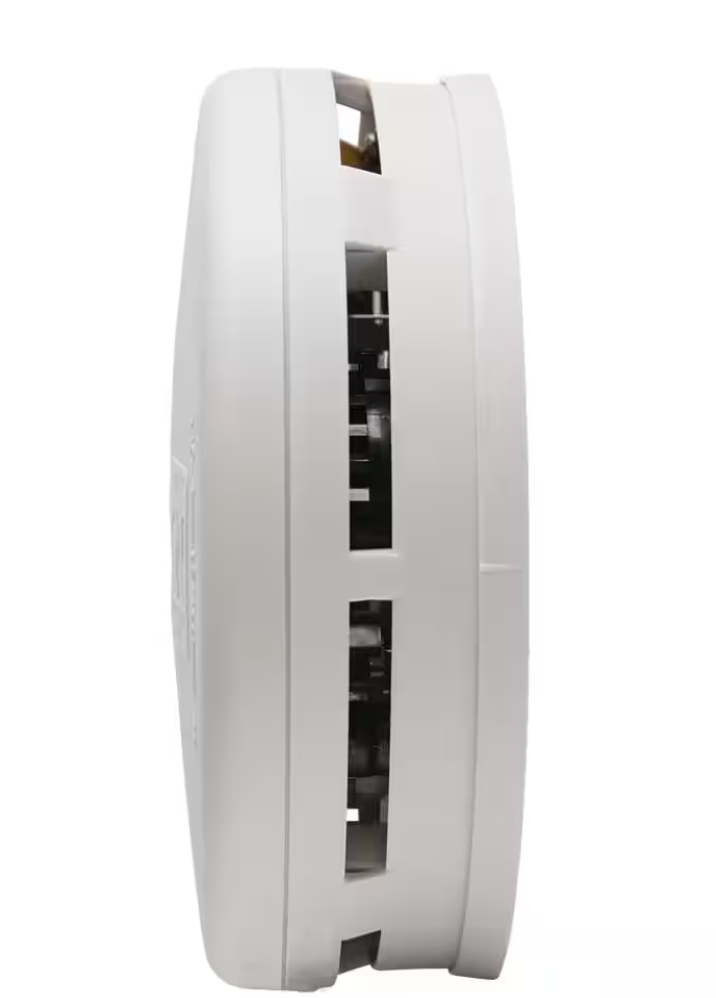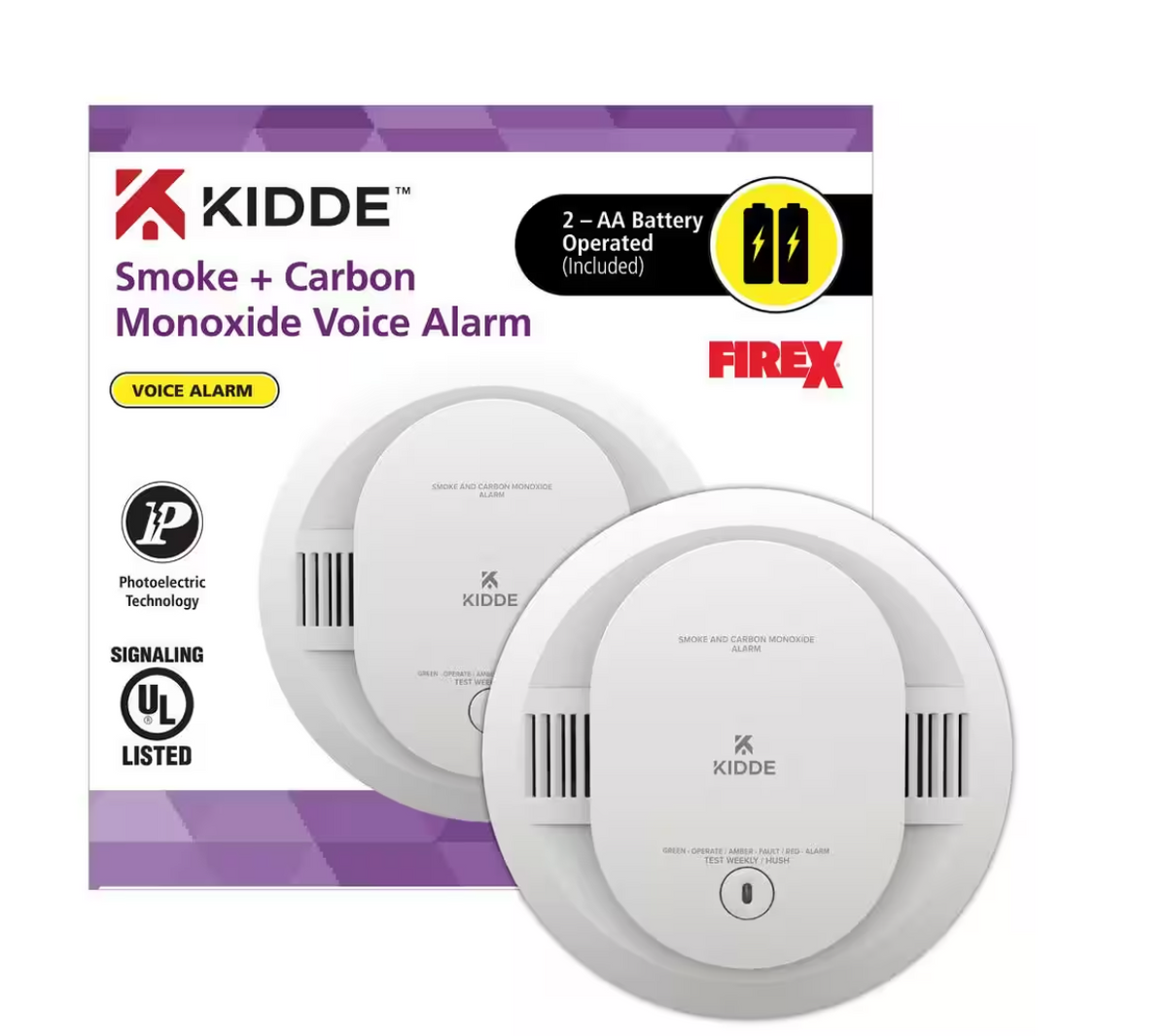Smoke detectors are a must-have for anyone but especially for older adults who want to safely age at home. They are truly one of the most important tools that can save lives in the event of an emergency.
As we age, we are more likely to have medical conditions that make us especially vulnerable to smoke and fire hazards. Some of these medical conditions may include dementia, arthritis, or Parkinson’s disease. General vision and hearing issues can impact one’s safety as well.
This is why it is important to have working smoke detectors throughout the entire home.
Types of Smoke Detectors
There are many options of smoke detectors for older adults available. Let’s discuss how to choose the one that best meets your needs for aging at home safely.
Ionization vs. Photoelectric Sensors
Smoke detectors can be broadly divided into two categories: ionization and photoelectric. Ionization smoke detectors are better for detecting fast-burning fires like paper or wood, while photoelectric smoke detectors are better at detecting slow-burning fires like those involving cooking oils or plastics.
- Photoelectric sensors detect particles in the air that come from smoldering fires
- Ionization sensors detect particles that come from flaming fires.
It’s generally recommended that an ionization detector be used for those with pets or have a gas stove, or an electric oven. For those that don't have pets or a gas stove, then a photoelectric type is sufficient.
Alert System
One may also want to consider the way the smoke detector alerts those within the home. The kind of smoke detector one needs depends on age and health conditions. There are even special smoke detectors for older adults, or for people who are deaf or have vision problems.
Smoke detectors for older adults are specifically engineered with an 85-decibel alarm that is easier for older ears to hear. They may also have strobe lights that alert people who have limited visibility or have difficulty seeing the often tiny blinking red light that comes with most smoke detectors.
We recommend either First Alert’s Battery Powered Smoke and Carbon Monoxide Detector or Kiddle’s Voice Alert Smoke and Carbon Monoxide Detector.
First Alert’s detector is a reliable solution that comes with a variety of features include:
- Indicator lights and an 85 decibel siren
- Battery operated for easy installation
- Low battery signal mute, quiets low battery signal for up to 8 hours

Kiddle’s Voice Alert Smoke and Carbon Monoxide Detector is a great option for those with impaired visibility or hearing. With a unique voice alert system, it is much easier for anyone within the home to be alerted of a fire.
Key Features Include:
- LED lights and voice alarm that states phrases such as: "Fire! Fire!", "Warning! Carbon Monoxide!", or "Low Battery!"
- Ionization sensor technology with a 85 decibel alarm
- Operates on batteries to continue working even during a power failure

Where Should Smoke Detectors Be Placed?
The National Fire Protection Association (NFPA) recommends installing smoke alarms in every bedroom, outside each sleeping area, on every level of the home, and inside every sleeping area. Smoke detectors should be installed at least 10 feet away from furnaces, ovens, clothes dryers, or anything that produces combustion particles for optimal home safety.
How Often Should They Be Checked?
The National Fire Protection Association (NFPA) recommends the following with regards to testing and replacing the fire alarms in your home for safety:
- Smoke alarms should be tested once a month using the test button, and make sure everyone in the house knows how they sound.
- When the alarm "chirps" you know the battery is low.
- Whether they use 10-year batteries or hardwired alarms, replace all smoke alarms when they reach ten years old or sooner if they don't function properly when tested.
- Dust or vacuum the fire alarm annually.
Free Smoke Detectors For Older Adults
In some cities, fire departments and other organizations offer free smoke detectors for older adults, so check online or call your local fire department for more information.
In limited counties in the U.S., you can get a free smoke detector for older adults from the American Red Cross. The New York State Senate has specifically teamed up with the Red Cross to provide and install smoke alarms to high-risk areas. They call the program Sound the Alarm. The State of New Jersey has a similar program called Save a Life.
Home Fire Safety Checklist
One of the most important things you can do to protect you or a loved one from a home fire is to have a home fire safety checklist. This will ensure that you have all of the items you need in case of an emergency. It will also ensure that when the smoke detector goes off, there is a clear plan in place.
A home fire safety checklist should include the following items:
- A working smoke alarm
- A fire extinguisher
- A designated meeting place outside the home
- A list of emergency contact numbers
- A copy of an insurance policy kept outside the home or digitally
You can purchase a fire extinguisher at any home improvement or hardware store. Keep it in an easy-to-reach location. Depending on the size of your home, you may need a few of them.
Stay Safe from Fires
The aging process can affect our ability to respond to emergencies. And although we may not be able to hear or see the smoke alarm as easily or exit the home as quickly, there are solutions to help.
Be sure to always have working smoke detectors in the home and utilize a home safety safety checklist to ensure you and your loved one’s can continue staying safe and happy at home. And if you still have concerns or don’t know where to begin, you can get in contact with our team anytime.










